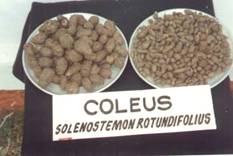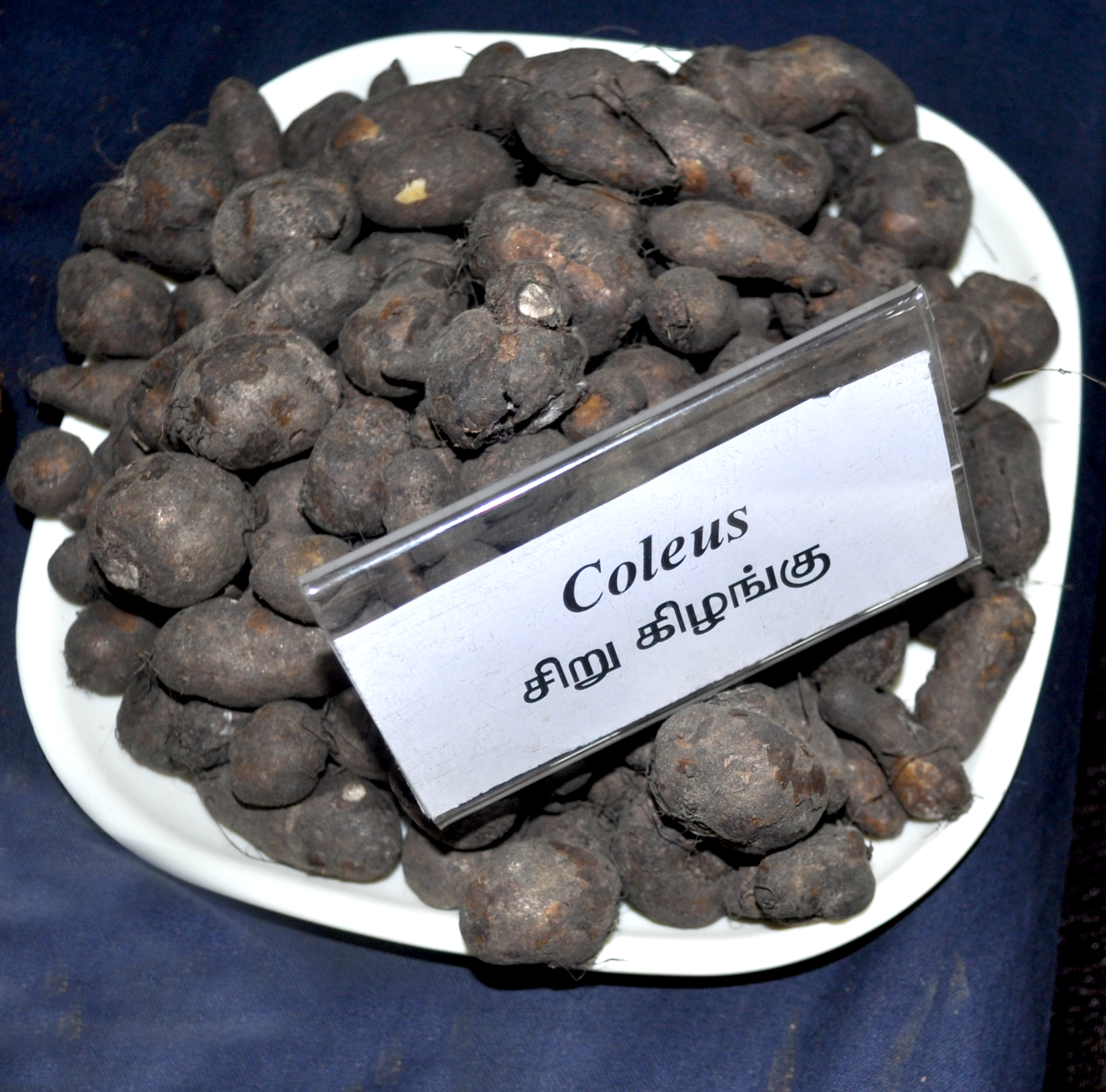Chinese potato (Coleus parviflorus L.)
Syn : Solenostemon rotundifolius
Labiatae
Varieties
Co 1 and Sree Dhara are the popular cultivars.
|
 |
 |
|
Co 1 |
Soil and climate
Red, loamy and well drained soils. Comes up well in shade with warm humid climate. It requires very good rainfall for its growth and cannot withstand drought conditions. In case rains are not received, irrigation has to be provided for satisfactory growth.
Season
March – April is the best season for planting.
Raising nursery
Raise a nursery, approximately one and half months prior to planting. An area of 500 m2 is required to produce vines for planting one hectare of land. Cattle manure or compost may be applied @ 1 kg/m2 and ridges / mounds may be prepared at a closer spacing of 45/60 cm. Healthy tubers that weigh about 15-20 g may be planted at 5cm spacing on the ridges / mounds so as to accommodate 750-1200 kg tubers in 500 m2 area during March - April. Top-dress with urea (5 kg / 500 m2) at about three weeks after planting to encourage good vine growth. Stem cutting of 15-20cm length from these sprouts also used as planting material. To enable rapid multiplication of the planting material, single node cuttings can be planted directly in the secondary nursery. Such single node cuttings produce axillary shoots within one week can be planted in the main field.
Preparation of main field and planting
The field is ploughed 4 to 5 times to a fine tilth and form ridges and furrows 60 cm apart. Use herbaceous cuttings of 10 cm length taken from the nursery beds and plant in the main field during July – October at a spacing of 30 cm on the ridges either in vertical or horizontal position. Horizontal planting of vines to a depth of 4-5 cm and exposing the terminal bud ensures quick establishment and promote tuber yield. In loose soils having good drainage, planting can also be done on flat beds with provision for drainage.
Irrigation
Irrigation is done at weekly intervals.
Application of fertilizers
FYM at 25 t/ha and NPK at 30:60:150 kg/ha are applied as basal. At the time of earthing up on 30 days after planting, apply 30 kg N/ha along with 2 kg of Azospirillum.In case, the soil has eroded from the base of the plant, give one more earthing up at 30 days later to promote tuber formation.
After cultivation
2 or 3 weedings can be done as and when necessary. Earthing up can be done on 2 months after planting.
Crop protection
Root knot nematode is a serious pest on coleus and the infested plants exhibit serious swellings or galls in the roots resulting in suppressed roots, stunted growth and wilting. Less than a millimetre long, the nematodes are tiny worms that enter the plant roots of the seedling when the plant is most vulnerable. Therefore, emphasis may be given for the selection of seed tubers free of nematodes.
Deep ploughing of the field immediately after harvest exposes the soil and kills the nematodes. We can also control the nematodes by practising summer fallowing and soil solarization. Cultivation of sweet potato (Sree Bhadra) as a preceding crop in May-June enables trapping of root knot nematodes in the soil. To control leaf folding caterpillars and vine borers, dipping the vines in insecticide solution (Dimethoate or Rogar 30 EC ie. 1.7 ml/litre) for 10 minutes prior to planting is helpful. In case, severe damage is noticed in the field, field spraying may be adopted with Malathion (or) Fenthion (or) Fenitrothion 50 EC 1 ml/litre).
Harvest
Harvest the crop when the vines dry up at 4-5 months after planting. Pull out the plants and dig out the left over tubers in the field. Separate the tubers from the plant and destroy the crop residues by burning.
Yield
The crop yields 15 to 20 t/ha in 120 days of tubers. Updated on : Jan 2016
|


